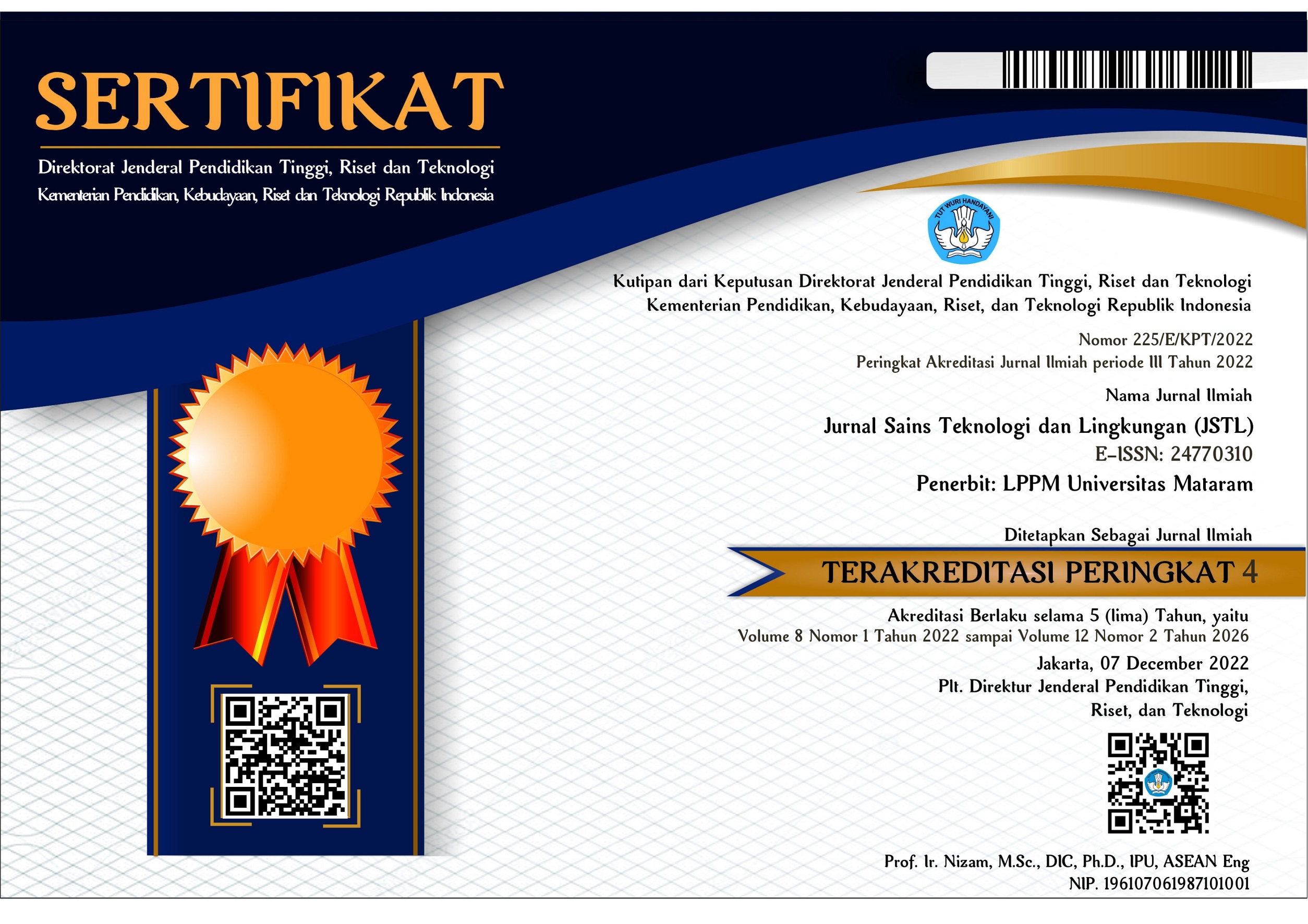Pemanfaatan Pupuk Hayati-fosfat untuk Meningkatkan Pertumbuhan Tanaman Jagung (Zea mays L.) di Entisol
Utilization of Biofertilizer-Phosphate to Increase Growth of maize (Zea mays L.) in Entisol
DOI:
https://doi.org/10.29303/jstl.v8i1.313Abstract
Entisols are low fertility soils that require high doses of inorganic fertilizers to support plant growth. On the other hand, it was reported that biofertilizers can be applied to support plant growth. The purpose of this study was to examine the ability of bio-phosphate fertilizers to affect plant growth. The greenhouse experiment was arranged according to a completely randomized design, consisting of five treatments of different fertilization and each treatment was repeated four times. Experimental treatments were P1) control; P2) biological-phosphate fertilizer treatment; P3) treatment of NPK fertilizers; P4) integrated fertilizer treatment of 2 combinations of fertilizers (biological-phosphate & NPK); P5) integrated treatment of 3 combinations of fertilizers (biological-phosphate, NPK & organic). The dose of NPK fertilizer is 75% of the recommended dose. The experimental soil has a sandy loam texture, pH-soil 6.01, content of C-organic1.20%, N-total 0.09%, P-available 5.68 ppm and Kdd 0.31cmol/kg. The results showed that the application of a single biological phosphate fertilizer had no significant effect on plant growth compared to the control. A significant effect was obtained on integrated fertilization, both with two combinations of fertilizers (P4) and with three combinations of fertilizers (P5). The highest plant growth rate, with reference to the total dry biomass of plant shoots and roots, was obtained in treatment P5 with plant growth rates reaching 232.14% higher than the single treatment of biological fertilizers (P2), 53.70% higher than the single treatment of NPK fertilizers (P3) and 16.35% higher than the integrated treatment of two combinations of fertilizers (P4).Downloads
Published
2022-06-30
Issue
Section
Articles
License

This work is licensed under a Creative Commons Attribution-NonCommercial-ShareAlike 4.0 International License.



1.png)











